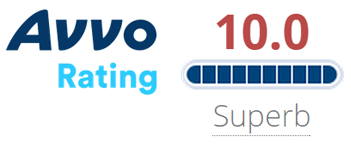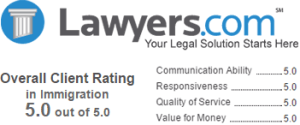Shusterman’s Immigration Update May 2014
Volume Nineteen, Number Five
 Shusterman’s Immigration Update May 2014 is the Web’s most popular e-mail newsletter regarding U.S. immigration laws and procedures with over 40,000 subscribers located in more than 150 countries. It is written by a former INS Trial Attorney (1976-82) with over 35 years of experience practicing immigration law.
Shusterman’s Immigration Update May 2014 is the Web’s most popular e-mail newsletter regarding U.S. immigration laws and procedures with over 40,000 subscribers located in more than 150 countries. It is written by a former INS Trial Attorney (1976-82) with over 35 years of experience practicing immigration law.
Published by the Law Offices of Carl Shusterman, 600 Wilshire Blvd, Suite 1550, Los Angeles, California, 90017. Phone: (213) 623-4592 x0.
Subscribe to our E-Mail Newsletter, join the conversation on our Immigration Facebook Page, follow our Blog Posts and subscribe to our “How-To” Immigration Videos.
Client Reviews

Go to a Law Firm which is Professional and Knowledgeable
“Very professional law firm. We had a difficult issue and Mr. Shusterman’s office got right onto the case and resolved the issue with USCIS. Because of their efforts, me and my family were able to get our Legal Permanent Residency card. My suggestion to those trying to obtain employment based card. Don’t look for money saving attorney. They will cost you lot more in long run. Go to a law firm which is professional and knowledgeable. It pays in the long term.”
- Nilesh Patel, Chicago, Illinois
Read More Reviews
Zoom Consultations Available!
Shusterman’s Immigration Update May 2014
TABLE OF CONTENTS:
1. The President Should “Kick-Start” Immigration Reform
2. So You Lost the H-1B Lottery? Now What?
3. Shusterman’s Upcoming Immigration Law Seminars
4. Physicians: Green Cards through National Interest Waivers
5. Success Story: Overcoming an Adjustment of Status Denial
6. Trivia Quiz: Sci-Fi Movie Stars
7. State Department Visa Bulletin for May 2014
8. Immigration Government Processing Times
9. Ask Mr. Shusterman: EB-5 Program – Individual or Regional Center?
10. Winner of Our April 2014 Trivia Quiz!
NEWS FLASHES:
-
- CBP Wait Times at Ports of Entry – Planning a trip to the US? Consult the CBP wait times at various ports of entry. This can be helpful when making travel plans as you can have some general idea regarding the delays to expect when arriving in the states. For instance, you can look up data on processing times at the busiest US airports and landports according to date and time to get a better idea of how long you can expect to wait upon entry.
-
- Congressional Hispanic Caucus Proposes More Administrative Relief – The Congressional Hispanic Caucus (CHC) has drafted a memo to DHS Secretary Jeh Johnson proposing ways for the administration to halt, delay or end deportation of certain immigrants who pose low priority to enforcement agencies. The CHC suggests that the administration adopt more humane practices to help protect family unity while immigration reform remains stalled.
-
- DACA Renewal Guidance Coming in May – USCIS has announced that it will be releasing information on how to renew your DACA and work authorization by the end of May. USCIS will be publishing a new form I-821D, and the renewal process is expected to be fairly straightforward and to be processed “well before” your current DACA and work authorization expire.
-
- EB-5 Statistics: Rise in Chinese Petitions – USCIS has published statistics on EB-5 petitions from 2008 to 2013, and one emerging trend is a surge in petitions from Chinese entrepreneurs. In fact, Chinese investors now make up over 80% or EB-5 investors, up from 13% 10 years ago.
-
- E-Verify Newsletter for Employers – USCIS has published the April 2014 edition of its E-Verify Connection newsletter. This newsletter contains helpful information for U.S. employers, including tips and news.
-
- H-1B Cap and Recruiting International Physicians – Every April, employers submit H-1B petitions for high-skill immigrants, including doctors. This year, the cap of 85,000 was reached in one week. Given that hiring nationwide is increasing, there are a few things that recruiters of international physicians should keep in mind, which I address in my blog post: “The H-1B Cap and International Physicians, What it Means for Physician Recruiting Professionals”.
- Immigration “How-To” Videos – Our 50+ “How-To” Immigration Videos have been viewed over 600,000 times. Subjects include how to obtain a green card through employment, how to become a U.S. citizen, how to win your case in immigration court, how to select an immigration attorney and many other topics. Our video Green Cards through Marriagehas been viewed over 200,000 times. We encourage you to take advantage of this free resource.
- RFEs for Medical Exams on Pending I-485s – Since 2004, USCIS has been issuing annual policy memos extending the validity of medical exams past their usual 1 year for I-485s that have been pending for many years. However, it appears that this year USCIS will not be issuing such a memo and that, rather, they will be issuing Requests for Evidence (RFE) for updated medical exams that are set to expire. It is unclear if USCIS will be issuing these RFEs to all pending I-485s or if they will limit requests to those cases whose priority dates are closer to becoming current. Either way, delays are expected. Stay tuned for more information.
- USCIS Transferring I-730 Cases to International Field Offices – Form I-730, Refugee/Asylee Relative Petition, will now be adjudicated at USCIS international field offices rather than at service centers. USCIS started transferring cases on April 1, beginning with those for which the beneficiary is in China. USCIS will send a transfer notice once a case has been transferred and the international field office will then send further instructions.
- USCIS’ Updated Processing Times – On April 3, USCIS updated the processing times for the various types of cases that it processes at its field offices, service centers, and the National Benefits Center as of February 28.
- Work Authorization for H-4 Spouses – The Department of Homeland Security will be publishing proposed rules to encourage entrepreneurs and other high-skill immigrants to come to the United States. Included in the proposals is one to make H-4 visa holders (spouses of H-1B workers) eligible for work authorization, thanks in part to a petition that received over 6,000 signatures.
1. The President Should “Kick-Start” Immigration Reform
It is increasingly unlikely that the House of Representatives will join the Senate in passing a bipartisan Comprehensive Immigration Reform bill.
Both Houses of Congress can probably agree to pass legislation to allow for more employment-based immigration, to increase the number of H-1B visas and enact a new Agricultural Worker program.
However, the one area where GOP members of the House seem unlikely to compromise is on a Pathway to Citizenship for the millions of persons working unlawfully in the U.S.
On an ideological level, most Republicans oppose this as an “amnesty” and compare it to the amnesty law passed during the Reagan Administration in 1986.
On a political level, after the crushing defeat of their Presidential Candidate Mitt Romney in 2012, GOP House Members are extremely reluctant to pass legislation which would eventually lead to an increase in the number of Latino and Asian voters.
They are fearful that this would lead to more votes for their Democratic rivals.
Democrats, on the other hand, are loath to approve any piecemeal immigration legislation which does not provide for a Pathway to Citizenship.
What then is the solution?
Simple, it is called an Executive Order.
Executive Orders are nothing new. Almost every President since George Washington has issued them. Both Republican Teddy Roosevelt and Democrat Woodrow Wilson each issued over 1,000 such orders. So far, President Obama has issued far less Executive Orders (178) than his predecessor President George W. Bush (291).
Recently, the Congressional Hispanic Caucus sent a six-page memorandum to DHS Secretary Johnson urging President Obama to take executive action on various immigration issues.
Although I don’t see President Obama going as far as the Caucus would like, even a couple of well-chosen Executive Orders could help achieve a limited amount of immigration reform in 2014.
First, there is the matter of setting priorities as to who gets deported from the U.S. President Obama’s present priorities have resulted in more persons being deported in his first 5 years than his predecessor deported in 8 years. This has resulted in the separation of hundreds of thousands of families.
Since the President’s 2012 “Deferred Action for Children Arrivals” (DACA) program has provided a safe haven for over 500,000 young persons who arrived in the U.S. as children, does it make sense to continue to deport their parents and siblings? Why not apply the same standards to their close family members, and allow them to obtain work permits? Of course, like DACA, persons with serious criminal violations would still be subject to deportation.
Second, it is important to recognize that there are hundreds of thousands of persons who have waited for years to get green cards only to be told that they must travel abroad to do so, and that they have to obtain “extreme hardship” waivers to certain relatives in order to return to the U.S.
As a result, most choose to remain in the U.S. unlawfully rather than to take the chance that their waivers will not be approved.
As a former INS Trial Attorney, common sense tells me that it would be good policy to allow these persons to adjust their status in the U.S. and pay a substantial fine to the government to do so.
The President could implement this by extending the “parole-in-place” policy which currently allows spouses of persons in the U.S. Armed Services to adjust their status without leaving the U.S. and obtaining a waiver.
While these two Executive Orders would fall far short of creating a Pathway to Citizenship, it would certainly be a good start. It might even allow the two parties to reach across the aisle to fix our broken immigration system.
2. So You Lost the H-1B Lottery? Now What?
The USCIS received 172,500 cap-subject H-1B visa petitions during the first week of April. For the first time since Congress imposed an arbitrary numerical cap on H-1B petitions in the early 1990s, there were more losers than winners in this year’s lottery. Given that the cap is presently set at 85,000, there are a total of 87,500 persons who will not be able to work in H-1B status for the companies which sponsored them.
If you are one of these 87,500 people, what options do you have?
- If you are presently working pursuant to a grant of Optional Practical Training (OPT) in a STEM (Science, Technology, Engineering or Mathematics) field, and your employer uses E-Verify, you can apply for a 17-month extension of your OPT.
- Consider being sponsored by a cap-exempt employer:
- You can work “at” a non-profit institution of higher education;
- You can work “at” a non-profit entity which is “affiliated” or “related” to a non-profit institution of higher education; or
- You can work for a governmental or a non-profit research organization.
- If you are a citizen of Mexico or Canada, you may qualify for TradeNAFTA (TN) status.
- If you are a citizen of Australia, you should consider E-3 status.
-
- Depending on your education, experience, country of nationality, the type of work that you do and the identity of your sponsoring employer, you may be eligible for one of the following types of temporary working visas including:
- E-1 – Treaty trader
- E-2 – Treaty investor
- H-3 – Special education teacher
- L-1A – Multinational executive or manager
- L-1B – Specialized knowledge
- R-1 – Religious worker
Also, if your fiancée is a U.S. citizen, you may decide to speed up the date of your marriage and be sponsored for a green card.
If your spouse qualifies for E-1, E-2, L-1A or L-1B status, and you are in dependent immigration status, apply for an Employment Authorization Document (EAD).
If your spouse is already in H-1B status, it is likely that the USCIS will soon promulgate a rule which will permit certain persons in H-4 spousal status to apply for EADs.
We recognize that most of the rejected H-1B beneficiaries are currently outside the U.S. and have no options except to wait until next year to take part in the H-1B lottery. And we also realize that employers across the U.S. are suffering because of the law’s arbitrary numerical limit.
H-1B petitions which were filed using premium processing started to be adjudicated by the USCIS on April 28.
3. Shusterman’s Upcoming Immigration Law Seminars
-
- State Bar of California
International Law Section
Webinar
May 1, 2014
Topic: “ABC’s of E-2 Visas”
Register
-
- Federal Bar Association (FBA)
Immigration Law Seminar
University of Memphis School of Law
Memphis, TN
May 16-17, 2014
Topics: “CSPA & Child Citizenship Act of 2000” and “Doctors, Nurses, and Other Medical Professionals”
-
- American Immigration Lawyers Association (AILA)
Annual Conference on Immigration Law
Marriott Copley Place and Westin Copley Place
Boston, MA
June 21, 2014
Topic: “Forever (Under) 21: The Latest on CSPA & K-2 Ageouts”
-
- The Michigan Recruitment and Retention Network
Immigration Law Seminar
Lansing, Michigan
September 17, 2014
Topic: “International Physicians and U.S. Immigration Law: What Hospitals and Medical Groups Need to Know”
-
- Pincus Professional Education
Asylum, Detention, and Removal Seminar
Los Angeles Athletic Club
Los Angeles, CA
November 7, 2014
Topic: TBD
4. Physicians: Green Cards through National Interest Waivers
Normally, if you qualify for the second employment based (EB-2) category (persons with advanced degrees or exceptional ability), you are subject to the labor certification or PERM process. However, in 1999, Congress passed a law creating an exception allowing certain physicians to obtain green cards through National Interest Waivers (NIW).
Under this law, a foreign physician serving in a Health Professional Shortage Area (HPSA), Medically Underserved Area (MUA), Mental Health Professional Shortage Area (MHPSA) or for the Veterans Administration (VA) may self-petition (or have their employer submit a petition) in the EB-2 category for an NIW indicating that that he or she will work there for five years. As a result, the NIW is an excellent opportunity for physicians to obtain a green card without having their employers navigate through the PERM process.
Note: The government issued regulations in 2000 restricting the law to primary care physicians and injecting many requirements not found in the law in order to limit the benefits of the new law. Our law firm sued the government in Schneider v. Chertoff and won the case in the U.S. Court of Appeals for the 9th Circuit. As a result, the government issued a memo conforming its standards to those found in the law.
To obtain benefits under this law:
- The physician must agree to work full-time in an underserved area or for the VA;
- The state public health department has to determine that the work is in the public interest; and
- The physician must work full time for an aggregate of 5 years before he is eligible for a green card.
A physician who will be employed in a HPSA, MUA, MHPSA or a VA facility must contact the state department of health in the state where the practice site is located as each state has its own procedures for applying for the letter.
The next step is for the foreign physician to apply for an NIW by submitting the following evidence with Form I-140 to the USCIS. If the physician plans to work at more than one practice site, the following evidence must be submitted for each work location:
- The foreign physician’s full-time employment contract for the required period of clinical medical practice, or an employment commitment letter from a Veterans Affairs (VA) facility.
- Evidence that the foreign physician will provide full-time clinical medical service:
- In a geographical area or areas designated by the Secretary of HHS as having a shortage of health care professionals and in a medical specialty that is within the scope of the Secretary’s designation for the geographical area or areas; or
- In a facility under the jurisdiction of the Secretary of VA.
- A letter (issued and dated within 6 months prior to the date on which the petition is filed) from a State Department of Health or the Department of Veterans Affairs attesting that the foreign physician’s work is or will be in the public interest.
- If the foreign physician will establish his or her own practice, the physician must submit a sworn statement committing to the full-time practice of clinical medicine for the required period, and describing the steps the physician has taken or intends to actually take to establish the practice.
- Evidence that the foreign physician has passed a U.S. medical licensing examination and is competent in oral and written English.
- If the foreign physician was a J-1 nonimmigrant who received medical training in the United States, he or she must also provide a copy of the USCIS approval notice of the J-1 visa waiver (form I-612).
The physician and his family members can apply for Adjustment of Status along with the I-140 NIW petition provided visa numbers are available, but the green card will be granted after the completion of 5 year service requirements. In addition, the NIW physician is required to submit HPSA service compliance documentation to the USCIS within 120 days after the second and the sixth anniversaries of the date that NIW immigrant petition was approved.
5. Success Story: Overcoming an Adjustment of Status Denial
This month’s success story is about how our office obtained a green card for our client, David, a resident of Florida, after his first adjustment of status application was denied.
6. Trivia Quiz:
7. State Department Visa Bulletin for May 2014
In the May 2014 Visa Bulletin, the worldwide family 2A category (spouses and children of permanent residents) remains frozen at September 8, 2013. In contrast, the worldwide 2B category (unmarried adult sons and daughters of permanent residents) advances over 3 months and the worldwide 3rd category moves forward 6 weeks.
The dates for persons born in the Philippines, forward movement is slow except in the 1st category (unmarried adult sons and daughters of U.S. citizens) which advances by 3 months.
For persons born in Mexico, the 2A category remains backed-up to April 15, 2012. The 2B category is in disaster mode, backed up to May 15, 1993. This is a 21-year wait on paper, but because of per-country limitations, a 100+ year wait in reality.
The chart below tells the story in more detail:
FAMILY CATEGORIES
| Categories | Worldwide | China (PRC) | Mexico | Philippines |
|---|---|---|---|---|
| 1st | 3-8-07 | 3-08-07 | 11-15-93 | 2-1-02 |
| 2A | 9-8-13 | 9-8-13 | 4-15-12 | 9-8-13 |
| 2B | 2-1-07 | 2-1-07 | 5-15-93 | 6-22-03 |
| 3rd | 9-1-03 | 9-1-03 | 7-1-93 | 3-1-93 |
| 4th | 12-8-01 | 12-8-01 | 12-1-96 | 11-01-90 |
After a long string of advances, the worldwide EB-3 category fails to advance in May.
On a brighter note, Philippines EB-3 moves forward 4 1/2 months.
For India, EB-2 remains frozen while EB-3 advances by 2 weeks. This situation needs to be rectified by Congress.
China EB-2 inches forward by 5 weeks.
India and China are the two most populous in the world, and supply U.S. companies with an abundance of talent. Immigrants should not be penalized because they were born in countries with large populations.
The chart below tells the story in more detail:
EMPLOYMENT CATEGORIES
| Categories | Worldwide | China (PRC) | India | Mexico | Philippines |
|---|---|---|---|---|---|
| 1st | Current | Current | Current | Current | Current |
| 2nd | Current | 4-15-09 | 11-15-04 | Current | Current |
| 3rd | 10-1-12 | 10-1-12 | 10-1-03 | 10-1-12 | 11-1-07 |
| Unskilled | 10-1-12 | 10-1-12 | 10-1-03 | 10-1-12 | 11-1-07 |
| 4th | Current | Current | Current | Current | Current |
| Religious | Current | Current | Current | Current | Current |
| 5th | Current | Current | Current | Current | Current |
Predictions by the State Department
WORLDWIDE F2A: From early 2013 through September 2013, the level of demand for numbers in this preference category was extremely low. As a result, the F2A cut-off date was advanced at a very rapid pace, in an attempt to generate demand so that the annual numerical limit could be fully utilized. As readers of the Visa Bulletin were advised during that time, such cut-off date advances were not expected to continue, and at some point they could stop, or retrogression might be required.
The level of demand being experienced for FY-2014 has resulted in the Worldwide F2A cut-off date being held since October. Despite no forward movement of the cut-off date, the level of demand has continued to increase dramatically. At the current rate, such demand will require a retrogression of the F2A cut-off date within the next several months. That action would be necessary to hold number use within the annual numerical limit.
MEXICO F2A: Despite an earlier retrogression of this cut-off date, the level of demand remains extremely heavy. As a result, it is likely that another retrogression of this cut-off date will be required to hold number use within the annual numerical limit.
WORLDWIDE F2B: Demand continues to be down, so this category is expected to continue moving forward.
CHINA EB5: This category is expected to retrogress in either August or September of this year as 80% of EB5 pending applications are from China.
INDIA EB2: It is expected that in August or September this category will advance to the beginning of 2008.
WORLDWIDE EB3: There will likely be no movement in this category, and, if fact, there could be potential retrogression due to higher demand beginning in May.
8. Immigration Government Processing Times
 We link to the most recent immigration waiting times for each of the four USCIS Service Centers, the National Benefits Center and the Administrative Appeals Office. We also link to the processing times of all of the 83 USCIS District Offices and Sub-offices. We link to the Labor Department’s page entitled “Processing dates for labor certification applications”. Finally, we link to the State Department’s “Visa Wait Times” page.
We link to the most recent immigration waiting times for each of the four USCIS Service Centers, the National Benefits Center and the Administrative Appeals Office. We also link to the processing times of all of the 83 USCIS District Offices and Sub-offices. We link to the Labor Department’s page entitled “Processing dates for labor certification applications”. Finally, we link to the State Department’s “Visa Wait Times” page.
9. Ask Mr. Shusterman: EB-5 Program – Individual or Regional Center?
We have seen an increase in individuals who are interested in coming to the United States through an investment in 2014, specifically by taking part in the EB-5 program.
Within this program, however, there are different approaches and options that people can take to eventually gain their residency.
 The first option in the EB-5 program is for those who wish to go it alone and establish and manage a new business. Those individuals with adequate business experience who believe in managing their own business and more importantly their own money, would prefer to invest directly because they want maximum control over their investment and maximum profit.
The first option in the EB-5 program is for those who wish to go it alone and establish and manage a new business. Those individuals with adequate business experience who believe in managing their own business and more importantly their own money, would prefer to invest directly because they want maximum control over their investment and maximum profit.
To be considered eligible as an individual investor, one must be:
1) Creating a new business, purchasing an existing business and restructuring it so that a new business results from the investment, or expanding an existing business by 140% of the pre-investment number of jobs or net worth, or retaining all existing jobs in a troubled business that has lost 20% of its net worth in the past year or two.
2) Must invest at least $1,000,000 or $500,000 where the investment is being made in a “targeted employment area” where the unemployment rate is extremely high (at least 50% higher than the national unemployment rate) or in a rural area.
3) The investor must also be creating jobs for a minimum of 10 workers or in the case of investors taking over “troubled businesses,” all existing workers must be retained for a period of two years.
The other option in the EB-5 program available to individuals who wish to come to the United States is to make an investment through a regional center. The individuals who go this route typically do not want to start a business, or if they do, their business would not create enough direct employment for them to qualify for EB-5 investment. This route is also typically taken by individuals who would like to remain flexible in terms of geographic mobility and the option to travel and spend significant amounts of time outside the country. Another advantage is that the investor does not have to be involved actively in day-to-day activities of the company.
Since most regional centers have been approved as “targeted employment area” investments, most individuals who come into the U.S. as regional center investors have to commit $500,000 as opposed to the investment of one million dollars. Another seemingly advantageous quality of investing through a regional center is that the creation of indirect employment is allowable as opposed to the individual EB-5 investor who must prove direct employment creation.
No matter which option potential investors decide to go with, every petition is highly scrutinized and examined by the USCIS. Universal requirements under the EB-5 program include proving source of funds, job creation, and level of involvement or extent of management.
If you are considering coming to the United States through the EB-5 investor program, consult with a qualified and experienced attorney to evaluate pros and cons for both the options.
10. Winner of our April 2014 Immigration Trivia Quiz!
Quiz Removed
Below is the message we received from the winner:
“Dear Mr. Shusterman,
Below are the answers to the trivia quiz:
The first model is Victoria Beckham, born in Hertfordshire, England on April 17, 1974
The second model is Iman, born in Mogadisghu, Somalia on July 25, 1955
The third model is Anna Kournikova, born in Moscow, Russia on June 7, 1981
My name is Melissa, daughter of Mexican immigrants but born and raised in California. I am currently a program specialist for the Los Angeles Unified School District, in the Division of Special Education. I reside in Los Angeles with my husband and two kids. My interests include working out and spending time outdoors.
I solved the quiz via a tool called google. In the search engine I typed famous immigrant models and then clicked on images. I found similar images of the models and then selected the pictures which led me to their biographies.
I first subscribed to the Shusterman site 2 years ago and I use it to keep myself abreast of the latest information. My husband is a native of Mexico and does not have legal status in the USA. The Shusterman site helps me stay informed of the latest immigration information.
Thank you,
Melissa”
Congratulations, Melissa! I look forward to helping you!
Carl Shusterman
Certified Specialist in Immigration Law, State Bar of California
Former Immigration and Naturalization Service (INS) Attorney (1976-82)
Served as Member of AILA Board of Governors (1988-97)
Law Offices of Carl Shusterman, 600 Wilshire Blvd., Suite 1550
Los Angeles, CA 90017, Phone: (213) 623-4592 x0, Fax: (213) 623-3720
“Not only is it (immigration reform) the right thing to do morally, it’s the right thing for our country: Independent economists say immigration reform will grow our economy and shrink our deficits by almost $1 trillion in the next 20 years.”
– President Obama
Shusterman’s Immigration Update May 2014 – Quick Links
About Us
Back Issues of Our Newsletter
Citizenship
Client Testimonials
Forms Download
Green Cards
Job Search
PERM
Processing Times
Schedule a Legal Consultation
Subscribe to Our Newsletter
Success Stories
Temporary Visas
Visa Bulletin
May 1, 2014
Disclaimer: This newsletter is not intended to establish an attorney-client relationship. All information contained in this newsletter is generalized. Any reliance on information contained herein is taken at your own risk.





